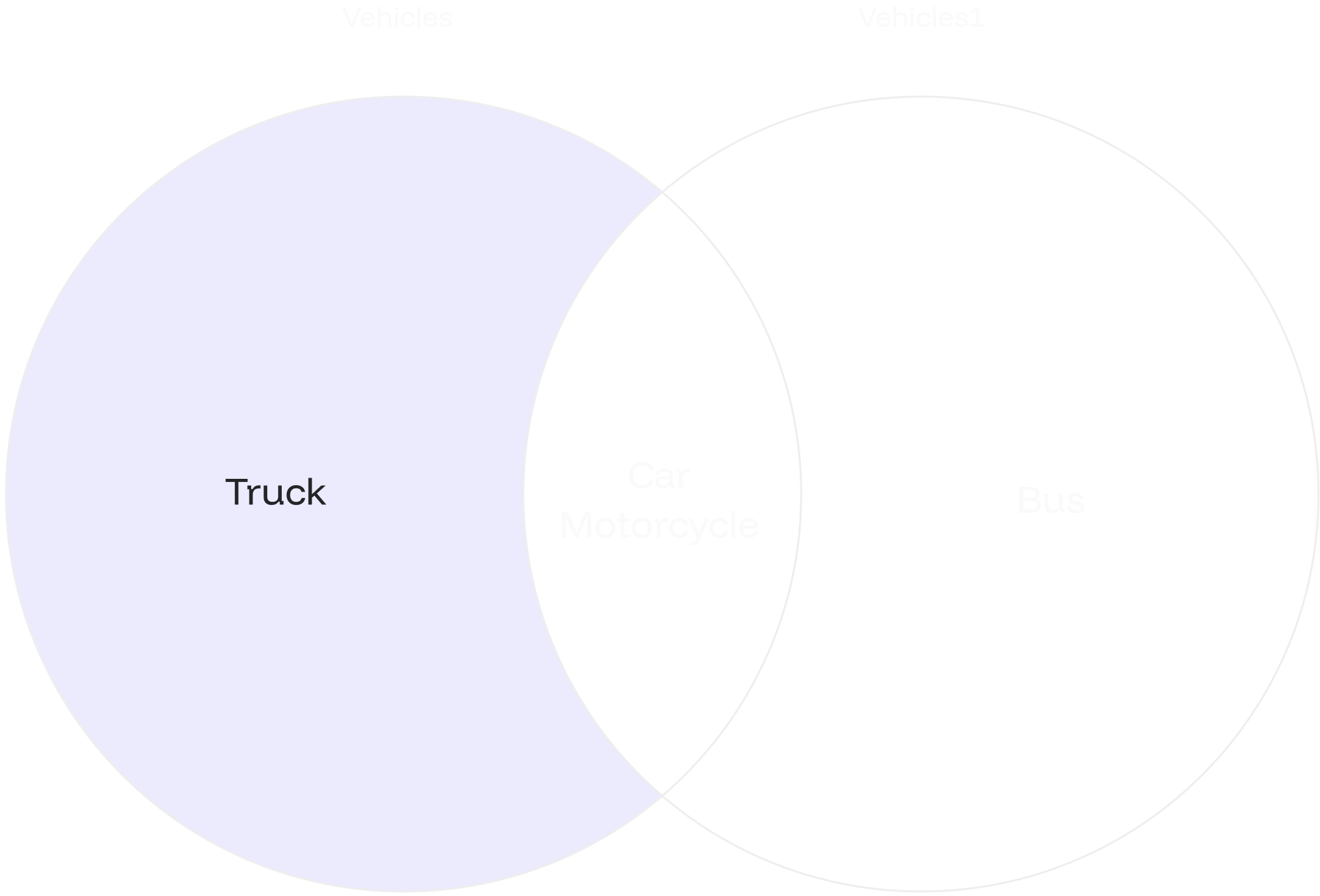EXCEPT
Overview
The EXCEPT combines the result sets of two or more tables and retrieves rows specific to the first SELECT statement but not present in the subsequent ones.
Syntax
The syntax for the EXCEPT is as follows:
SELECT value1, value2, ... value_n
FROM table1
EXCEPT
SELECT value1, value2, ... value_n
FROM table2;
value1, value2, ... value_n: The columns you want to retrieve.table1, table2: The tables from which you wish to retrieve records.
Example
Let’s assume you have two tables: vehicles and vehicles1. You want to find the vehicle which was present in 2021 but is not present in 2022:
CREATE TABLE vehicles (
vhc_id INT,
vhc_name TEXT
);
CREATE TABLE vehicles1 (
vhc_id INT,
vhc_name TEXT
);
INSERT INTO vehicles VALUES
(1, 'Truck'),
(2, 'Car'),
(3, 'Motorcycle');
INSERT INTO vehicles1 VALUES
(2, 'Car'),
(3, 'Bus'),
(4, 'Motorcycle');
SELECT * FROM vehicles;
SELECT * FROM vehicles1;
vhc_id | vhc_name
--------+------------
1 | Truck
2 | Car
3 | Motorcycle
vhc_id | vhc_name
--------+------------
2 | Car
3 | Bus
4 | Motorcycle
EXCEPT to find employees present in 2021 but not in 2022:
SELECT vhc_name FROM vehicles
EXCEPT
SELECT vhc_name FROM vehicles1;
vhc_name
----------
Truck
vehicles) but not found in the second table (vehicles1). In this case, the result is the vehicle name “Truck.”


EXCEPT ALL
Overview
The EXCEPT ALL allows you to find rows specific to the first SELECT statement while preserving duplicate entries.
Syntax
The syntax for the EXCEPT ALL is similar to EXCEPT:
SELECT value1, value2, ... value_n
FROM table1
EXCEPT ALL
SELECT value1, value2, ... value_n
FROM table2;
value1, value2, ... value_n: The columns you want to retrieve.table1, table2: The tables from which you wish to retrieve records.
The data types of corresponding columns in the SELECT queries must be compatible.
Example #1
You aim to identify customers who have bought products from one marketplace but have not purchased from another. Start by creating the tables and populating them with relevant data.
CREATE TABLE marketplace1_transactions (
customer_id INT,
product_id INT,
amount FLOAT
);
CREATE TABLE marketplace2_transactions (
customer_id INT,
product_id INT,
amount FLOAT
);
INSERT INTO marketplace1_transactions VALUES
(101, 1, 100.00),
(102, 2, 150.00),
(103, 3, 200.00),
(104, 1, 120.00);
INSERT INTO marketplace2_transactions VALUES
(102, 3, 180.00),
(103, 2, 160.00),
(105, 4, 90.00),
(106, 1, 110.00);
SELECT * FROM marketplace1_transactions;
SELECT * FROM marketplace2_transactions;
customer_id | product_id | amount
-------------+------------+--------
101 | 1 | 100
102 | 2 | 150
103 | 3 | 200
104 | 1 | 120
customer_id | product_id | amount
-------------+------------+--------
102 | 3 | 180
103 | 2 | 160
105 | 4 | 90
106 | 1 | 110
EXCEPT ALL to find customers who have purchased products from one marketplace but not from the other:
SELECT customer_id FROM marketplace1_transactions
EXCEPT ALL
SELECT customer_id FROM marketplace2_transactions;
customer_id who has only transacted in the first marketplace and has not engaged in any corresponding transactions in the second marketplace.
customer_id
-------------
104
101
marketplace1_transactions) but missing in the second marketplace (marketplace2_transactions).


Example #2
Let’s create two tables, left_array_values and right_array_values, to hold sets of values.
CREATE TABLE left_array_values (
value INT
);
CREATE TABLE right_array_values (
value INT
);
INSERT INTO left_array_values VALUES (1), (1), (3);
INSERT INTO right_array_values VALUES (1), (2);
SELECT * FROM left_array_values;
SELECT * FROM right_array_values;
value
-------
1
1
3
value
-------
1
2
EXCEPT ALL operation to compare the values within the arrays, focusing on unique elements while retaining duplicate entries.
SELECT value
FROM left_array_values
EXCEPT ALL
SELECT value
FROM right_array_values;
EXCEPT ALL operation processes each element individually from both inputs at a time. The comparison occurs element-wise, leading to the inclusion of both 1 and 3 in the final result.





